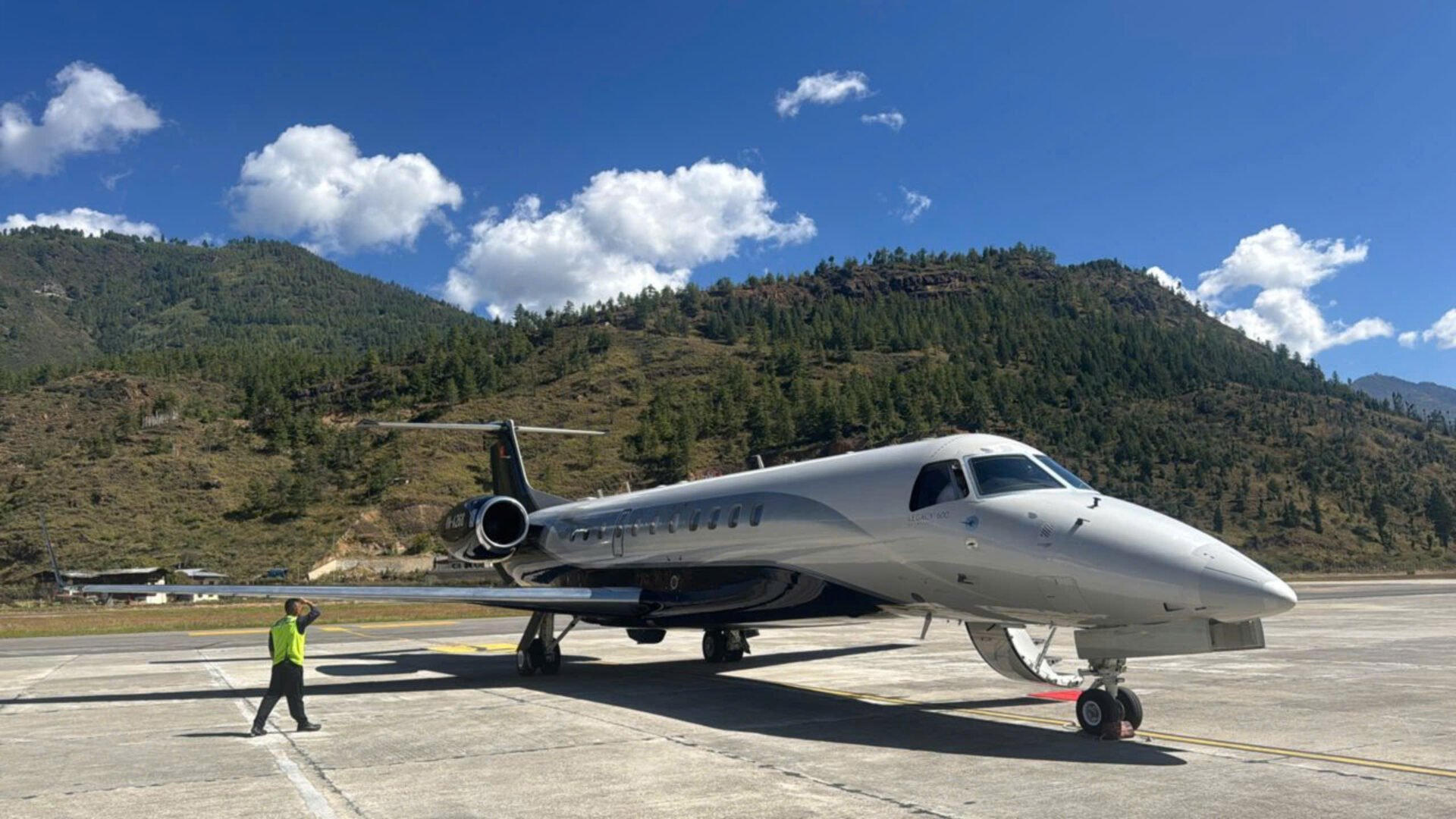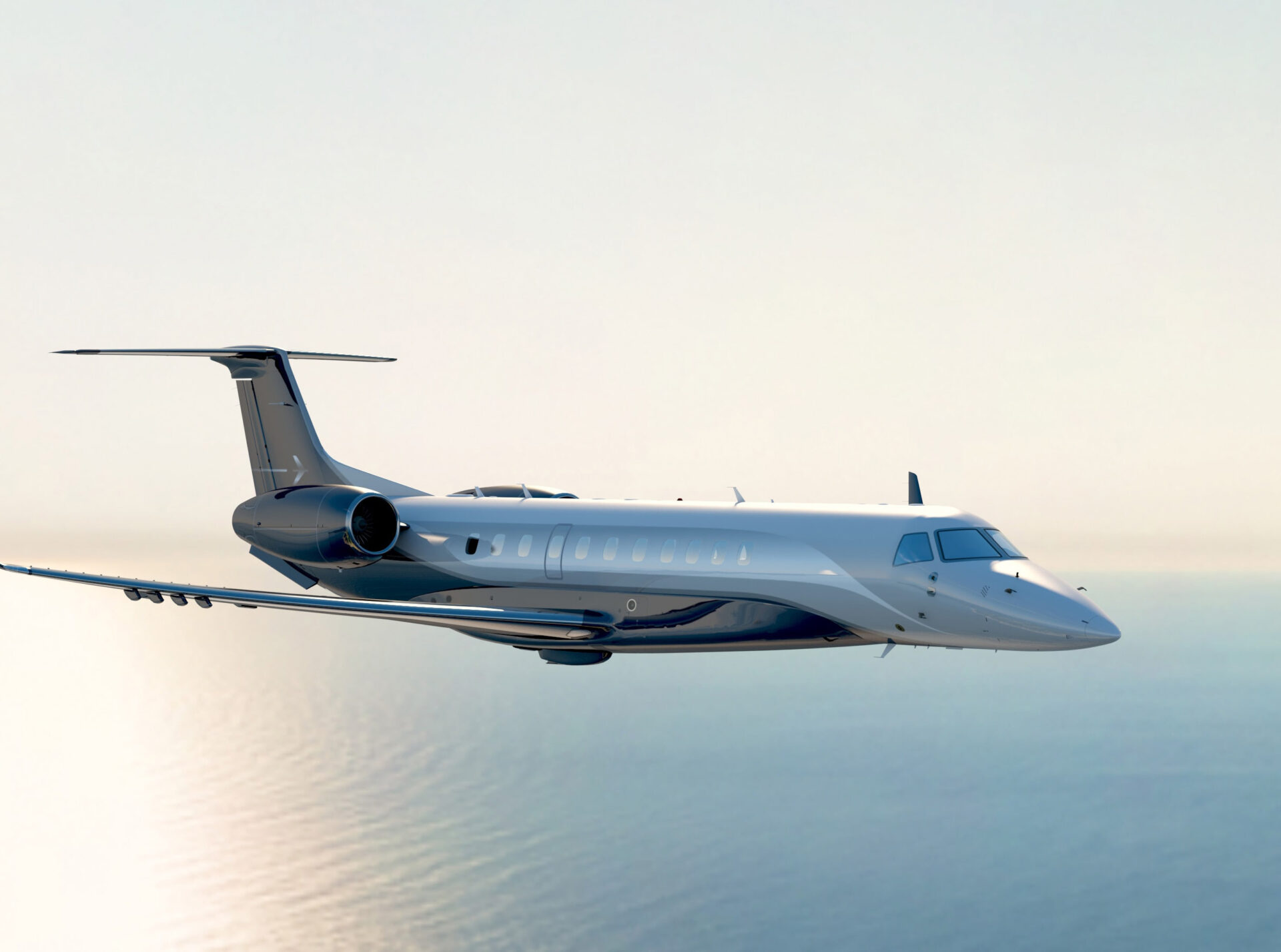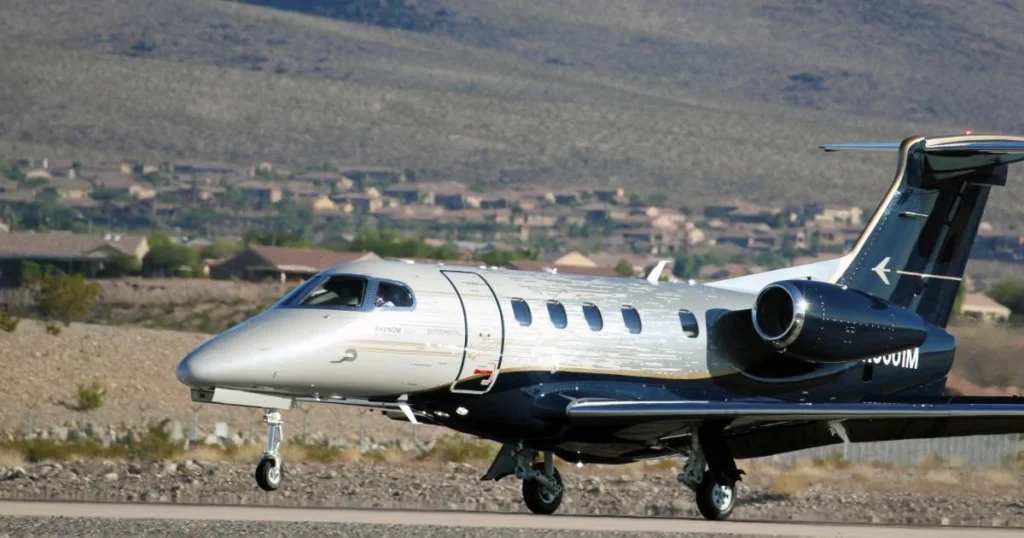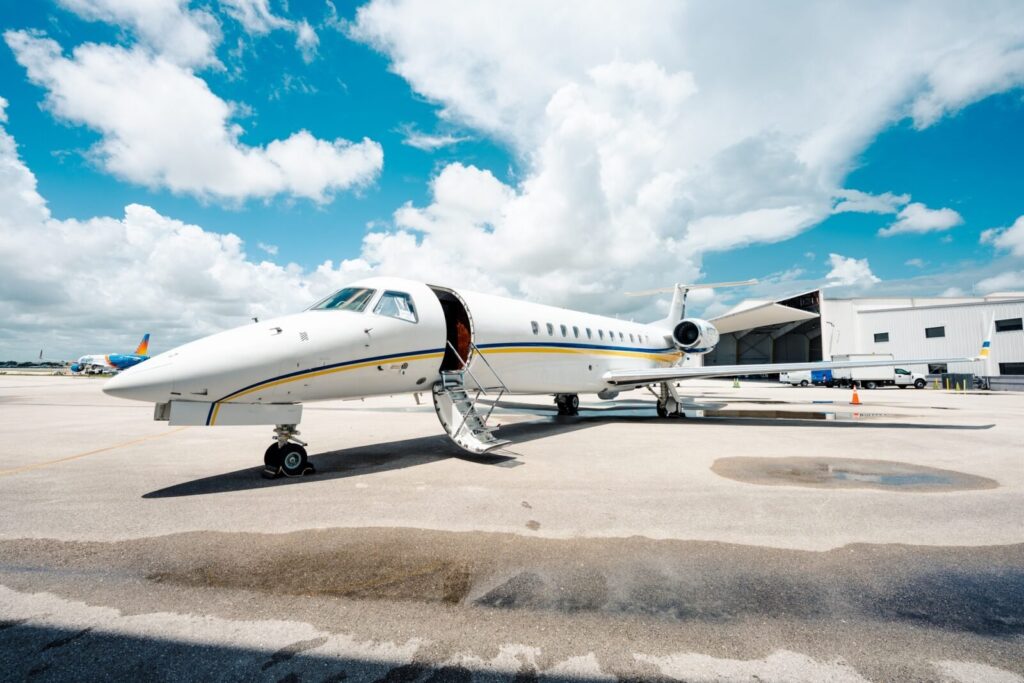Call us +84 396 919 611

You could be forgiven for drawing comparisons between the economy and business jet fleet in Vietnam and those in China. Much like in China, Vietnam underwent its own economic reforms during the 1980s, and just like in China, a government lead anti-corruption drive had a huge effect on the country’s business aviation market in recent years.
Despite this, Vietnam can be viewed as a modern economic success story, with annual GDP growth never dipping below 2.55% even during the Covid years.
Having transformed itself from centrally planned economy during the 1980 through a series of economic reforms dubbed Đổi Mới (Renovation) to a market lead economy, Vietnam has lifted itself, and its population, from one of the poorest nations on earth, to being reclassified as a lower-middle income country.
The country itself is as geographically diverse as its population. From the golden sandy beaches of Phu Quoc, Con Dao in the South to the winery snow covered streets of Sapa in the North, Vietnam’s coastline stretches for more than 3,260km. It is perhaps this coastline that many will be familiar with, as millions of tourists flock to the beaches of Cam Ranh, Nha Trang, and the beautifully preserved ancient town of Hoi An every year.
Its capital city, Ha Noi, sits in the North of the country, and whilst it is officially the seat of power, its most populated city is Ho Chi Minh City. Located in the South of the country, Ho Chi Minh City is a sprawling city that is home to more than 10 million inhabitants that collectively contribute around a quarter of the country’s GDP every year.
More than 40.0% of that GDP comes from services, which includes financial services, hospitality, health and information technology (IT). This percentage has largely stayed the same over the past few years, although it is being slowly caught up by Industry, which has been increasing by around 0.5% each year.
However, it is exports that have really helped the Vietnamese economy grow. It is the worlds biggest exporter of broadcasting equipment and telephones, with South Korean giant Samsung building more than 60.0% of its popular cellphones in Vietnam. The country is also the worlds biggest exporter of cashew nuts, second biggest exporter of coffee, and in the top three global exporters of coconuts.
Despite all of the good numbers that Vietnam has posted, its country’s citizens aren’t as optimistic about the economy, with many businesses closing down, and worried conversations about the state of economy happening in the thousands of coffee shops that dot the country.
This really came to a head towards the end of 2022 when the Vietnamese government introduced its ‘Blazing Furnace’ drive, in an attempt to crackdown on corruption in the country. This has had mixed results, with 2023 alone seeing a total of 24,162 cases brought against people for either receiving bribes or not declaring all of their income.
The most high-profile case of the anti-corruption drive saw property alleged involvement in a US $12.5 billion fraud case. Although this was the most public case, and it’s likely that Vietnam will seek to make an example of Truong My Lan, the country’s own President Vo Van Thong resigned from office in March, after he had allegedly broken government rules.
This political instability had a negative effect on the fleet of business jets in the country. Although Vietnam’s economic success had seen an expanding middle and upper middle class become increasing mobile, much like when China’s Xi Jinping introduced his anti-graft measures at the end of 2013, the fleet of business aircraft in the country would have declined rapidly over the course of the following year, as wealthy individuals and companies looked to distance themselves from any outwards showing of wealth, however a number of newly delivered aircraft helped balance out the departures from the fleet.
Prior to the introduction of ‘Blazing furnace’ the country’s business jet fleet had still been in it’s infancy, and as such, the local authorities were still refining the rules and regulations for both operating in, and owning private jets in the country. These refinements included mandating that every private jet based in the country needed to be placed on the local VN- register, but also extended to the lengthening, and then shortening again, of permits to fly into the country. The rules on registering based aircraft in the country on the VN register appear to have been relaxed though, as one US-registered Gulfstream G650 is based in Ha Noi, the country’s capital city.
Despite Ho Chi Minh City being the country’s biggest city, the majority of Vietnam’s business jet fleet is based up in Ha Noi, with just an Embraer Legacy 650 and a recently delivered Gulfstream G650ER based in the South. The numbers we have used in the data below is from our 2023 Business Jet Fleet Report, which covers data up until the end of 2023, however in June 2024 Truong Group, a large company specializing in the manufacturing of cars, light trucks and buses, took delivery of a brand-new Gulfstream G650ER (6559/VNA966) and based it in Ho Chi Minh City.

Asian Sky Group takes a deep dive into the Vietnamese business jet fleet from 2021, when there was a total of eight business jets in the country. Since then, a number of aircraft have left the fleet, which has been balanced out by a number of new aircraft joining.
The fleet in 2021 was almost unrecognizable from the fleet in 2023, with only two of the eight aircraft in service in 2021 still being operational in 2023. Departures from the fleet in 2022 included two of the first private jets to be operated in the country – a Gulfstream G450 and a Boeing BBJ, both managed by Hong Kong-based management company Metrojet. The G450 left the fleet first and is now operating in Indonesia as T7-HNA, whilst the Boeing BBJ was added to the local Vietnamese register as VN-A123, then spent some time stored at Clark Airport in the Philippines. It has since reverted to the registration it wore before taking up VN-A123, although it is now stored in the US and registered as N883V.
Also missing from the 2021 fleet are two Falcon 2000LXS’, both of which have since been sold to operators in Europe. The first of these (361/VN-A486) left the fleet in January 2022 and is now operating in Turkey, whilst the second (302/VN-A788) left in August 2023 and is now in Italy wearing I-MIRL.
A third Falcon 2000 family aircraft is still in Vietnam; however, this aircraft is effectively in storage having been put up for sale. Originally delivered in 2018 as VP-CTV, Falcon 2000S msn 744 was later re-registered locally as VN-A238, before being put up for sale in November 2023. Although the aircraft has performed a few test flights since being put up for sale, it remains in storage outside the Vietnam Airlines maintenance facility in Ho Chi Minh City.
Despite the two Falcon 2000LXS’ leaving the Vietnam fleet, Dassault has continued its dominance in the country with the addition of four new Falcon 8Xs since 2021. Of the three Falcon 8X’s that Dassault has delivered to Vietnam since 2021, a total of three aircraft are managed by Hai Au Aviation. Based in Ha Noi, Hai Au had a long history of operating Seaplanes from its Ha Noi base, largely on scenic charters to some of Vietnam’s most stunning locations, including the UNESCO World Heritage Site Ha Long Bay.
At the end of 2023 the Falcon 8X was the aircraft type that featured the most in the Vietnam business jet fleet, with the Gulfstream G650ER being the second most popular with three examples operating. However, this is set to change in 2024, with the aforementioned Ho Chi Minh City based G650ER (6559/VNA966) being delivered to Vietnam in June of 2024.

According to business aviation data and consultancy company WingX, business jet traffic into and within Vietnam has been erratic over the past few years. Along with China and South Korea, Vietnam is one of the only countries to follow the Lunar calendar, subsequently the period around the Lunar New Year (Tet) sees the entire country shut down for a week, as many migrants from the central highlands return home to spend time with their families.
On average, Ho Chi Minh City has seen 31 monthly business jet flights over the course of the past few months, whilst Ha Noi has seen 48 monthly flights. However, on a monthly basis since the beginning of 2024, Ho Chi Minh City has seen its year-on-year number of business jet flights decline just once (in February, the same month that the country slows down for its Lunar New Year Tet celebrations), whilst Ha Noi saw the consecutive declines between January and March, and a further fourth and fifth decline in May and June.
Unsurprisingly it is the route that connects the country’s biggest cities of Ha Noi and Ho Chi Minh City that sees the most business jet traffic. A total of 108 flights over the course of the past year operated between Ha Noi and Ho Chi Minh City, whilst the opposite direction saw a slightly higher number at 116.
When it comes to the top 10 destinations from both Ha Noi and Ho Chi Minh City there is a bit of a divergence betwetanen destinations. No international destinations feature in the top three routes from Ha Noi, whilst two international routes appear in the top three from Ho Chi Minh City. The most popular international destination from Ha Noi is Singapore, which appears as the fifth most popular route from the country’s capital, behind domestic destinations Hai Phong, Ho Chi Minh City, Da Nang, Nha Trang and Phu Quoc, the latter three of which can be classed as leisure destinations.
Whilst Singapore is the fifth most popular destination from Ha Noi, it is the second most popular destination from Ho Chi Minh City, beaten only by the busiest domestic route to the country’s capital. Singapore is just one flight ahead of Bangkok, which also follows right behind Singapore on the list of most flown routes from Ha Noi.
Outside of Asia, there were only three routes appearing in the top ten routes from each city, although it could be argued that neither of the routes were necessarily the final destination for those flights. Dubai appeared in the top 10 routes from both Ha Noi and Ho Chi Minh City, in the tenth and ninth spots, respectively. Although Dubai is destination in its own right, it’s likely that some of these flights used Dubai as a staging post to eventually reach somewhere in Europe. This is definitely the case with the third non-Asian route from Vietnam, as Anchorage occupies the eighth position for flights from Ho Chi Minh City. Anchorage is used as a refueling stop on the way from Asia to destinations in Canada and the US.
Overall, there were five domestic destinations in the top ten routes from Ha Noi, whilst only three were in the top ten from Ho Chi Minh City. The additional domestic route from Ha Noi not mentioned above was to Vinh Dung Quat, which can also be classed as a leisure destination.


With a population of almost 100 million and a rapidly expanding economy, Vietnam’s business jet flights will grow, however just like we alluded to right at the start of this article, there are many parallels that can be drawn with fleet growth in China as well.
The biggest of those that has yet to be discussed is a lack of infrastructure to support business aviation operations, as well as saturated airports.
Currently there are no FBOs operating in Vietnam. There have previously been talks between local Vietnamese companies and a well known Asian business aviation company to establish an FBO in Ha Noi, however the talks between the two parties stumbled due to a lack of government support.
Vietnam is a vast country, with a very good domestic airline network served by newer generation aircraft at high frequencies. This has, in the case of Ho Chi Minh City at least, meant that the existing facilities are unable to keep pace with the growing number of flights. The city is addressing this by not only building a new terminal at the current Tan Son Nhat International Airport, but also by building a new airport which is set to become operational in mid-2026, having slipped from its original target of 2025.
Located to the east of Ho Chi Minh City in the Long Thanh District, the airport is designed to accommodate 100 million passengers per year, and whilst it has also be designed to handle up to 1.2 million tons of cargo per year, there are currently no plans to handle business aviation flights.
Vietnam Air Charter Flight Company
With its breathtaking natural beauty, historical depth, and rapidly growing luxury tourism sector, Vietnam is well-positioned to become one of Asia’s top destinations for private jet travel. JetVina – Vietnam Air Charter Company stands at the forefront of this transformation, offering an exclusive gateway to the wonders of Vietnam, one bespoke private jet charter flight at a time.

To book the Private Jet Flight as well as air charter services and use our Fast Track Services and VIP Lounge at any Vietnam airport as well as luxury ground transfer or Asia Pacific destination such as Bali, Maldives, Phuket…. please contact JetVina via Whatsapp or Telephone +84 396.919.611 or Email reservations flights@jetvina.com.
- ORDER Без категории, Vietnam Private Aviation
Memberships
Experience
- Hotel & Villa
- Yacht
- Fast Track
- Flight Permits
Legal
Contact Us
- Request a quote
- +84 396 919 611
- flights@jetvina.com
- ------------------------------------------
- Office 1: Phu Quoc: Group 3, Cua Lap, Duong To
- Office 2: 1st Floor Terminal 03 - Tan Son Nhat International Airport, Bay Hien Ward
- ------------------------------------------
- Careers

Membership
Experience
- Hotel & Villa
- Yacht
Legal
Contact Us
- Request a quote
- +84 396 919 611
- flights@jetvina.com
- ---------------------------------------
- Office 1: Phu Quoc: Group 3, Cua Lap, Duong To
- ---------------------------------------
- Office 2: Ho Chi Minh: 1st Floor Terminal 03 - Tan Son Nhat International Airport, Bay Hien Ward
- ----------------------------------------
- Careers




